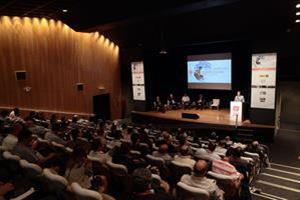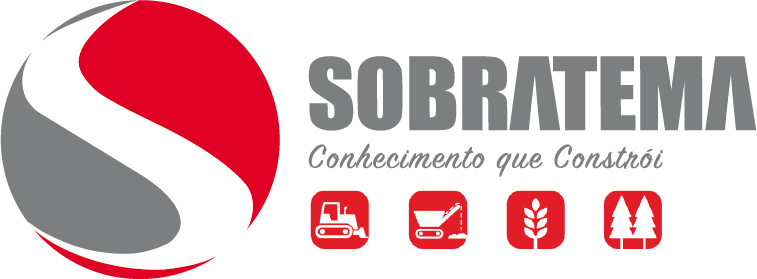Publicado em 27 de abril de 2016
Speakers of the Sobratema Workshop 2016 show how the use of technologies improves asphalt compaction
Event had also had a panel about soil compaction

To allow a higher efficiency in compaction, Roese presented an ideal sequence, which starts with the paver, to ensure maximum density. After this step, a tandem vibratory roller—whose speed is determined by the speed of the paver—is used for intermediate compaction. Next, a tire roller is used to seal the asphalt cap. “This process involves a lower risk of damage to the layers”, explained him. Next, in the final compaction, the tandem roller is used in the static mode to remove all surface marks.
Talking about the time needed to carry out the compaction, Roese presented an application that calculates the maximum time to develop the works efficiently. This time is calculated using variables such as environmental conditions, specification of the asphalt mixture, delivery temperature of material and base of application. Another technology shown by him was an application developed to calculate the amplitude of compaction using data such as temperature, type of mixture, shape and size of aggregate, among other information, which also presents the most appropriate equipment to be used in the project.
Next, Juliano Gewehr, expert in product and application engineering of Ciber Equipamentos Rodoviários (Wirtgen Group), talked about the initial questions for compactor selection, which include the type of mixture to be compacted, the thickness of the asphalt layer and the location of the works. “There is an ideal equipment to be used in each job”, highlighted him.
Gewehr brought the example of combined rollers, an idea for work in small projects, urban paving and road sections with potholes or needing repairs. “It’s no use in just putting asphalt into a pothole because there are cracks near it. If these cracks are not repaired, a new pothole will be created soon. Therefore, the correct way is to carry out localized paving and compaction”, explained him. About the high-performance compacting screeds, he thinks they may reach up to 95 percent of the compaction grade, ensuring higher production and reducing the number of passes of the rollers. “But the screed does not replace the roller”, ended him.
In his presentation, Gewehr remembered questions of safety such as operator’s visibility in the field, ergonomics, clear and accurate indications for the operator. He recommended that the users follow technical recommendations of compaction. “The sum of small mistakes may cause a high impact in the project as a whole”, pointed him. Talking about technology, the speaker discussed a solution where vibrating and oscillating forces complement each other, making possible to get the desired compaction with a lower number of passes.
The last talk of the panel and of the Sobratema Workshop was given by Juliano Silva, product manager of Volvo Construction Equipment, who informed the public about the technologic advancements in the area presenting technologies of pass mapping, temperature monitoring and density measurement. “The first two technologies are already being used in the market but the last one is really a recent innovation”, said him.
For the estimated measurement of the density, the technology is based on RNA – Rede Neural Artificial (Artificial Neural Network), formed by algorithms inspired in the human brain’s architecture. “This means that it simulates brain apprenticeship using repetitions. Thus, if there is more information, there is a refining in the process”, says Silva. The system processes data of design tolerances, comparing them with collected data to estimate the relative density in percent. “If you want 97 percent of compaction, you will have a guaranteed result if you get 98.5 percent”.
According to Silva, the combined use of the three technologies brings a lot of benefits to the user of tandem rollers such as the longest possible life of the asphaltic pavement, the reduction of operating costs and a higher operating speed.
The Sobratema Workshop 2016 debated the subject Compaction – Technologies and Concepts and had also a panel Technologies for Soil Compaction, presented by experts from Atlas Copco, Bomag Marini, Ammann Group and XCMG do Brasil. Promoted by Sobratema – Brazilian Association of Technology for Construction and Mining, the event was opened by Afonso Mamede, president of Sobratema and moderated by Claudio Schmidt, technical director of Sobratema.
The event was supported by Atlas Copco, Ammann Group, Sotreq/Caterpillar, Volvo and XCMG.
More information: http://www.sobratemaworkshop.com.br

Av. Francisco Matarazzo, 404 Cj. 701/703 Água Branca - CEP 05001-000 São Paulo/SP
Telefone (11) 3662-4159
© Sobratema. A reprodução do conteúdo total ou parcial é autorizada, desde que citada a fonte. Política de privacidade


